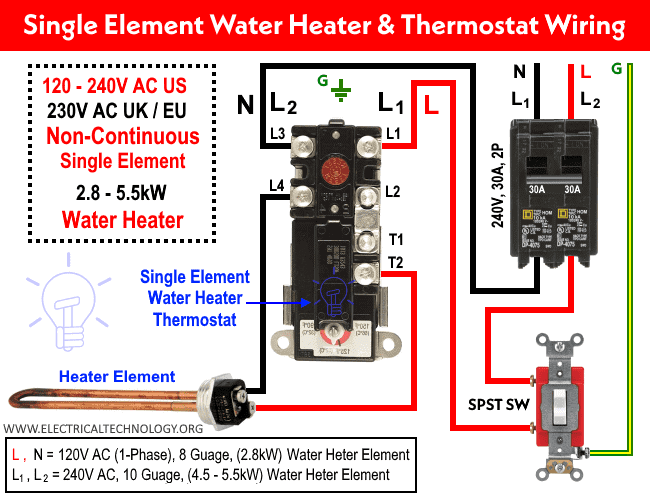Understanding the intricacies of a 240v electric water heater thermostat wiring diagram is crucial for both safe installation and effective troubleshooting. Many homeowners shy away from electrical work, but with a clear understanding of the diagram, tackling thermostat issues can become a manageable DIY project. We’ll explore the fundamental aspects of the wiring, common problems that arise, and how to interpret the diagram to ensure correct connections. The complexities of a 240v electric water heater thermostat wiring diagram often seem daunting, but this guide aims to demystify the process.
Decoding the Basics: What You Need to Know
Before diving into the specifics of a wiring diagram, let’s cover some essential concepts:
- Voltage: 240v indicates the electrical potential difference required for the water heater to function.
- Thermostat: This regulates the water temperature by switching the heating elements on and off.
- Wiring Diagram: A visual representation showing how the various components are electrically connected.
- Heating Elements: Resistors that convert electrical energy into heat to warm the water.
Understanding the Wiring Diagram
A typical 240v electric water heater thermostat wiring diagram will usually depict the following:
- Power Supply: The incoming 240v power lines (typically two hot wires and a ground).
- Thermostats (Upper and Lower): Each thermostat controls a specific heating element.
- Heating Elements (Upper and Lower): The actual heating components submerged in the water tank.
- High-Limit Switch: A safety device that cuts power if the water overheats.
- Ground Wire: Provides a path for electricity to safely return to the source in case of a fault.
Common Wiring Configurations
While specific diagrams may vary slightly depending on the water heater model, the general principle remains the same. Look for the L1 and L2 terminals on the thermostats, which connect to the two hot wires from the power supply. The thermostat will then switch power to the heating elements based on the set temperature.
Troubleshooting Wiring Issues
If your water heater isn’t heating, or if it’s tripping the circuit breaker, a wiring problem could be the culprit. Here are some common issues to look for:
- Loose Connections: Tighten any loose wire connections on the thermostats and heating elements.
- Burned Wires: Inspect wires for signs of burning or damage. Replace any damaged wires.
- Faulty Thermostat: A malfunctioning thermostat can prevent the heating element from turning on.
- Ground Fault: A short circuit to ground can cause the breaker to trip.
Important Safety Note: Always disconnect the power to the water heater at the circuit breaker before working on any electrical components.
Comparative Table: Thermostat Types
| Thermostat Type | Description | Advantages | Disadvantages |
|---|---|---|---|
| Snap-Action Thermostat | Uses a bimetallic strip to quickly switch the heating element on and off. | Simple, reliable, and inexpensive. | Can be less precise than electronic thermostats. |
| Electronic Thermostat | Uses electronic sensors and circuitry to control the heating element. | More precise temperature control and potentially energy efficient. | More complex and potentially more expensive to repair. |
Properly interpreting a 240v electric water heater thermostat wiring diagram is essential for safe and effective repairs. If you’re not comfortable working with electricity, it’s always best to consult a qualified electrician.







